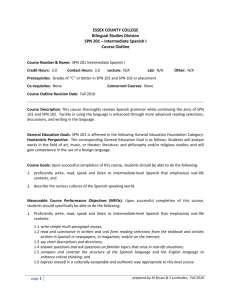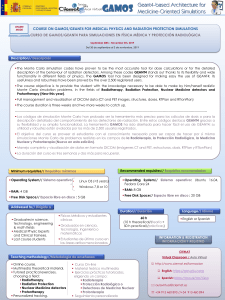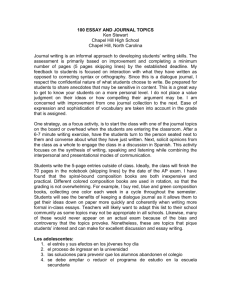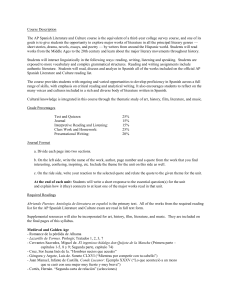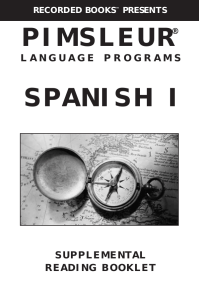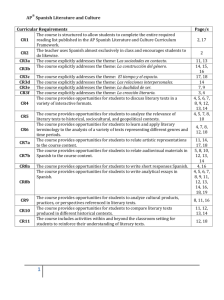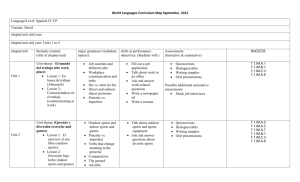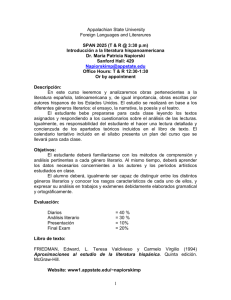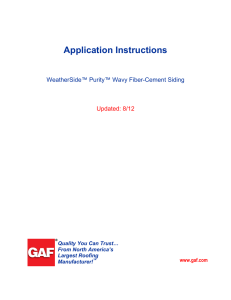Student Learning Outcomes (SLO)
advertisement
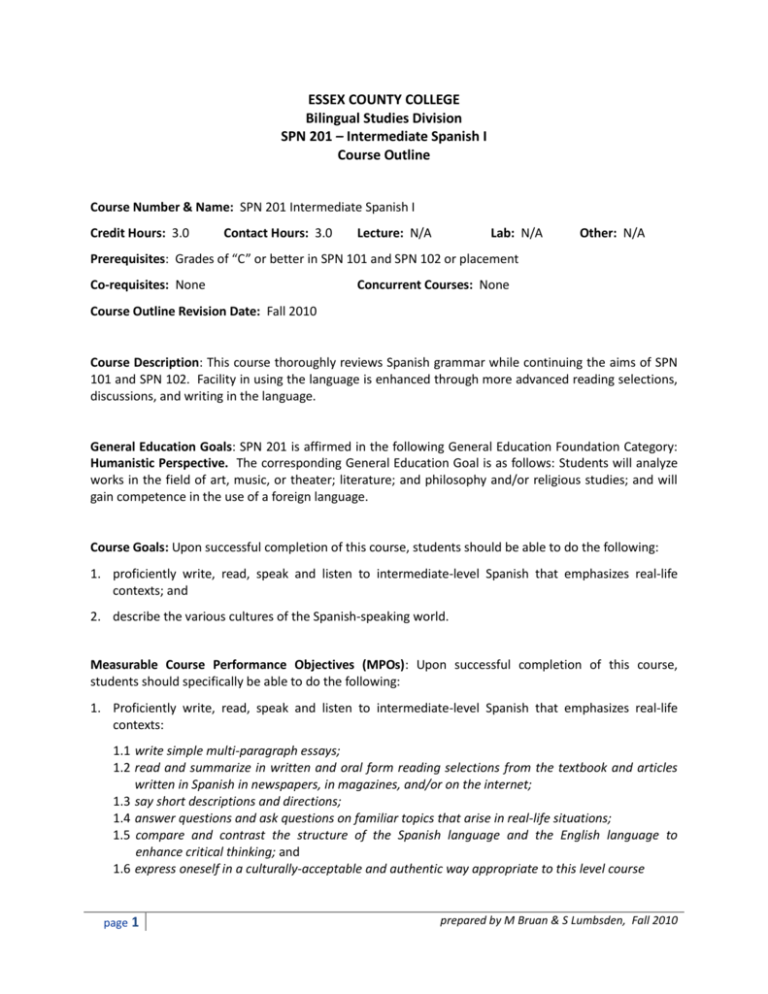
ESSEX COUNTY COLLEGE Bilingual Studies Division SPN 201 – Intermediate Spanish I Course Outline Course Number & Name: SPN 201 Intermediate Spanish I Credit Hours: 3.0 Contact Hours: 3.0 Lecture: N/A Lab: N/A Other: N/A Prerequisites: Grades of “C” or better in SPN 101 and SPN 102 or placement Co-requisites: None Concurrent Courses: None Course Outline Revision Date: Fall 2010 Course Description: This course thoroughly reviews Spanish grammar while continuing the aims of SPN 101 and SPN 102. Facility in using the language is enhanced through more advanced reading selections, discussions, and writing in the language. General Education Goals: SPN 201 is affirmed in the following General Education Foundation Category: Humanistic Perspective. The corresponding General Education Goal is as follows: Students will analyze works in the field of art, music, or theater; literature; and philosophy and/or religious studies; and will gain competence in the use of a foreign language. Course Goals: Upon successful completion of this course, students should be able to do the following: 1. proficiently write, read, speak and listen to intermediate-level Spanish that emphasizes real-life contexts; and 2. describe the various cultures of the Spanish-speaking world. Measurable Course Performance Objectives (MPOs): Upon successful completion of this course, students should specifically be able to do the following: 1. Proficiently write, read, speak and listen to intermediate-level Spanish that emphasizes real-life contexts: 1.1 write simple multi-paragraph essays; 1.2 read and summarize in written and oral form reading selections from the textbook and articles written in Spanish in newspapers, in magazines, and/or on the internet; 1.3 say short descriptions and directions; 1.4 answer questions and ask questions on familiar topics that arise in real-life situations; 1.5 compare and contrast the structure of the Spanish language and the English language to enhance critical thinking; and 1.6 express oneself in a culturally-acceptable and authentic way appropriate to this level course page 1 prepared by M Bruan & S Lumbsden, Fall 2010 Measurable Course Performance Objectives (MPOs) (continued): 2. Describe the various cultures of the Spanish-speaking world: 2.1 2.2 2.3 2.4 distinguish between the Spanish spoken in the different countries of the Hispanic world; recognize and describe the rich, vast culture and civilization of the Hispanic world; discuss the influences of the Hispanic culture on the American society; and describe the various schedules in the Hispanic world Methods of Instruction: Language use is encouraged through communicative activities including videos, compact discs (CDs), group work, role-playing, compositions, reading assignments from the textbook and other sources (newspapers, magazines and/or the internet), current events, class lectures, and discussions and debates. Outcomes Assessment: Quiz, test, and exam questions are blueprinted to course objectives. Oral components of class activities and the final exam are evaluated for the presence of course objectives via checklist rubrics. Data is collected and analyzed to determine the level of student performance on these assessment instruments in regards to meeting course objectives. The results of this data analysis are used to guide necessary pedagogical and/or curricular revisions. Course Requirements: All students are required to: 1. Take at least three written tests on the material presented in each chapter of the textbook and two to four short quizzes. Each written test will include reading and listening comprehension, grammar, and vocabulary. 2. Become familiar with and apply correctly the minimum of grammatical forms contained in the textbook. 3. Use and spell all words and idioms covered during the semester. 4. Actively participate in classroom activities designed to enhance conversational fluency. 5. Attend at least 90% of class sessions. 6. Complete weekly readings, homework, and at least seven writing assignments from the textbook or other sources. 7. Take the comprehensive final exam, which may include a composition and grammar component. page 2 prepared by M Bruan & S Lumbsden, Fall 2010 Methods of Evaluation: Final course grades will be computed as follows: % of final course grade Grading Components Class attendance and Participation 15% Students must attend 90% of all classes and participate in all class activities, which are designed to emphasize course objectives. Homework 15% Students complete homework, which is evaluated to ensure that they are meeting course objectives. 4 or more Written Tests & 2 – 4 Quizzes 20% Written and oral tests and quizzes contain questions that are blueprinted to course objectives. Data analysis of the blueprinting results will provide evidence of the extent to which students master course objectives. 8 or more Written Assignments 30% The written assignments are designed to help students master the grammar and conversational styles of native speakers. Evidence from these assignments will show the extent to which students have mastered written course objectives. Final Exam 20% A comprehensive final exam will provide evidence of the extent to which students have mastered course objectives and have synthesized all course material. NOTE: Students must demonstrate 70% competency on chapter tests and the final exam to pass this course. In addition, students must satisfactorily complete a minimum of seven writing assignments using vocabulary and grammatical forms appropriate to an intermediate-level Spanish course. Lastly, students must participate actively in all group and whole class activities. Academic Integrity: Dishonesty disrupts the search for truth that is inherent in the learning process and so devalues the purpose and the mission of the College. Academic dishonesty includes, but is not limited to, the following: plagiarism – the failure to acknowledge another writer’s words or ideas or to give proper credit to sources of information; cheating – knowingly obtaining or giving unauthorized information on any test/exam or any other academic assignment; interference – any interruption of the academic process that prevents others from the proper engagement in learning or teaching; and fraud – any act or instance of willful deceit or trickery. Violations of academic integrity will be dealt with by imposing appropriate sanctions. Sanctions for acts of academic dishonesty could include the resubmission of an assignment, failure of the test/exam, failure in the course, probation, suspension from the College, and even expulsion from the College. page 3 prepared by M Bruan & S Lumbsden, Fall 2010 Student Code of Conduct: All students are expected to conduct themselves as responsible and considerate adults who respect the rights of others. Disruptive behavior will not be tolerated. All students are also expected to attend and be on time for all class meetings. No cell phones or similar electronic devices are permitted in class. Please refer to the Essex County College student handbook, Lifeline, for more specific information about the College’s Code of Conduct and attendance requirements. page 4 prepared by M Bruan & S Lumbsden, Fall 2010 Course Content Outline: based on the textbook Entre Nosotros, 2nd edition, by Ana C Jarvis & Raquel Lebredo; published by Houghton Mifflin Company; ISBN #: 0-618-52776-1 Week Content 1 Buscando Trabajo: Objetivos y Solicitud de Trabajo Practicar el vocabulario Unit 1, Lección 1A Los verbos “ser' y estar”, construcciones reflexivas, pronombres de complement directo e indirecto usados juntos, usos y omisioes de artículos definidos e indefinidos, usos de preposiciones “por y para” Written Assignment I – Tema: “Buscando Trabajo Hoy Día” 2 Un Paso Más ` Lecturas Peiodísticas: “Cómo Alcanzar el Éxito de tu Trabajo” Cruzando Fronteras: Argentina, Chile, Uruguay, Paraguay y Bolivia Unit 1, Lección 1B Ventana del Mundo Literaraio: “Celos” por Roberto J. Payró; “Sólo” por Nicanor Parra; “Los Bomberos” por Mario Benedetti; “ La Señorita Julia” por Ana Cortesi; “Lo Fugaz” por Ricardo Jaimes Freyre 3 Para Divertirse Para practicar el vocabulario Estructuras: El pretérito contrastando con el Imperecto, verbos que cambian de significado en el pretérito Unit 2, Lección 2A Ventana al Mundo Literario: “La Pantorrilla del Comandante” (adaptado) por Ricardo Palma; “Los Tres Cuernos” (adaptado) por Jose Antonio Campos Written Assignment II – Tema: “El País Que Me Gustaría Visitar” 4 Estructuras: Comparativos de iqualdad y disigualdad y algunas preposiciones Un Paso Más Lecturas Periodísticas: “Esquiar en la Inmensidad de los Andes” (adaptadó) Cruzando Fronteras: Peru, Ecuador, Colombia y Venezuela Review Unit 2, Lección 2B Ventana al Mundo Literario: “Idilio” por Jose Antonio Silva; “Camino de Imperfección: Diario de ni Vida” por Rufino Blanco-Fombona Written Test I 5 De Viaje Para practicar el vocabulario Estructura: el participio pasado, el Pretérito Perfecto y el Pretérito Pluscuamperecto Review Unit 3, Lección 3A Ventana al Mundo Literario: “Mi Raza” por Jose Martí; Mon Dice Cosas” por Manuel del Cabral Written Assignment III – Tema: “Hombre es más que blanco, más que mulato, más que negro.” Explique con sus propias palabras este sentimiento de Jose Martí page 5 prepared by M Bruan & S Lumbsden, Fall 2010 Week Content 6 Un Paso Más Estructuras: El futuro, el condicional, futuro y el condicional para expresar probabilidad o conjetura Unit 3, Lección 3B Ventana al Mundo Literario: 'Día de los Reyes” por Maria Teresa Babin Written Assignment IV – Tema: “Recuerdos de un Día Muy Especial.” Las ilusiones que tenía de niño/a pero ya no lo tengo 7 Lecturas Periodísticas: “El Encanto de Guadalajara” (adaptado) Cruzando Fronteras: Cuba, República Dominicana, Puerto Rico y Panamá Unit 3, Lección 3C Ventana al Mundo Literario: “Introducción al estudio de las Contradicciones” por Bertalicia Peralta Written Test II 8 Bellas Artes Para practicar el vocabulario Estructuras: El pretérito perfcto y condicional, los pronombres relatives Review Lecturas Periodísticas: El périodo cubista en la obra del pintor méjicano Diego Rivera (adaptado) Unit 4 Lección 4A Ventana al Mundo Literario: “La Presa” por Aguileo J. Echerría; “Lo Fatal” por Ruben Darío; “La Máscara al Revés” por Matilde Elena López Written Assignment V – Tema: “Veranos de mi Niñez” 9 Cruzando Fronteras: Costa Rica, Nicaragua, El Salvador, Honduras y Guatemala Estructuras: La Voz Pasiva y algunas expressiones idiomáticas Un Poco Más Unit 4 Lección 4B Ventana al Mundo Literario: “Como Si Fuera la Madre” por Nery Alexis Gaytán; “La Tela de Penelope o Quien Engaña a Quien” por Augusto Monterroso Written Assignment VI – Tema: “Cosas que Hago Para Dar Sentido a Mi Vida” 10 La Familia Hispana De Hoy Para practicar el vocabulario Estructuras: El modo subjuntivo y el subjuntivo usado con verbos y expresiones de voluntad y emoción, para expresar duda, incredulidad y negación, lo indefinido, y lo no existente Review Unit 5, Lección 5A Ventana al Mundo Literario: “En Paz” por Amado Nervo Written Test III page 6 prepared by M Bruan & S Lumbsden, Fall 2010 Week Content 11 Estructuras: Expresiones que requieren el subjuntivo o el indicativo Un Paso Más Lecturas Periodísticas: El Credo de la Mujer Casada Unit 5 Lección 5B Ventana al Mundo Literario: “Se Fue Por Clavos” por Sabine R. Uribarrí Written Assignment VII – Tema: “La Importancia de Tener Sentido de Responsabilidad” 12 Estructuras: El imperativo de “Ud y Uds” Cruzando Fronteras: Méjico. Llegamos a los Estados Unidos: Los méjicanoamericanos, los puertorriqueños, los cubanoamericanos Review Unit 5, Lección 5C Ventana al Mundo Literario: “A Julia de Burgos” por Julia de Burgos; “A Pesar de Todo” por Josefna González Written Test IV 13 Mirando Televisión Para practicar el vocabulario Estructuras: El imperativo “tú” y de la primera persona plural Lecturas Periodísticas: Reporte Especial: Jorge Ramos Unit 6, Leccion 6A Ventana al Mundo Literario: “La Bolsa” por Fernán Caballero y; “Rima XXX” por Gustavo Adolfo Bécquer Written Assignment VIII – Tema: “Por qué Me Separé de mi Primer Amor?” 14 Estructuras: El imperfecto del subjuntivo y los tiempos compuestos del subjuntivo Cruzando Fronteras: España Unit 6 Lección 6B Ventana al Mundo Literario: “Poema XXIII” por Antonio Machado; “La Niña Fea” por Ana María Matute 15 Review and Comprehensive Final Exam page 7 prepared by M Bruan & S Lumbsden, Fall 2010
